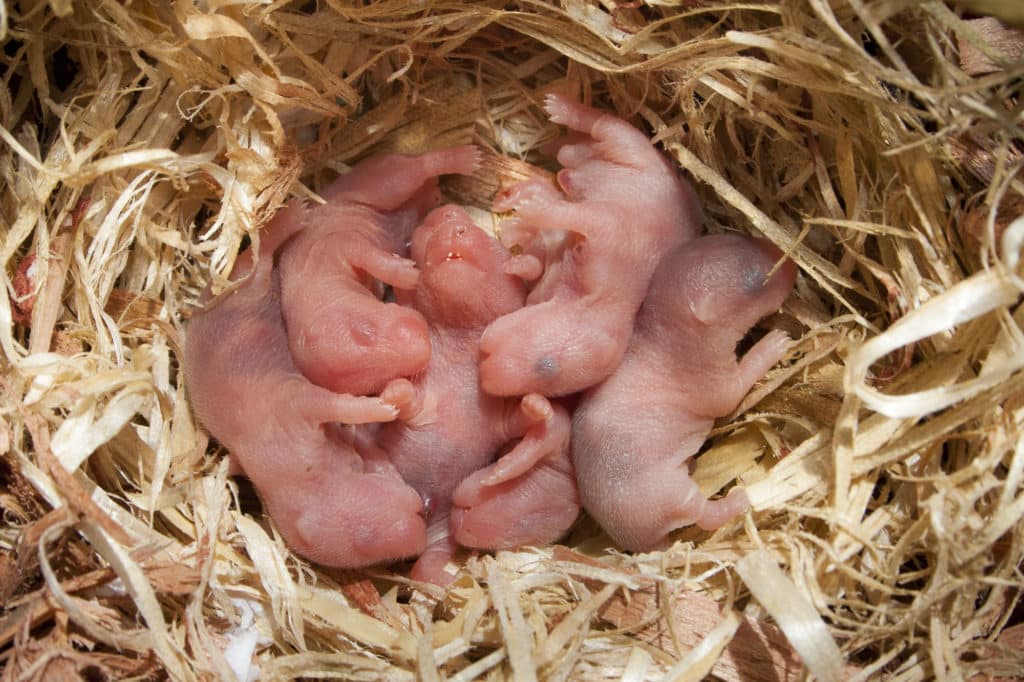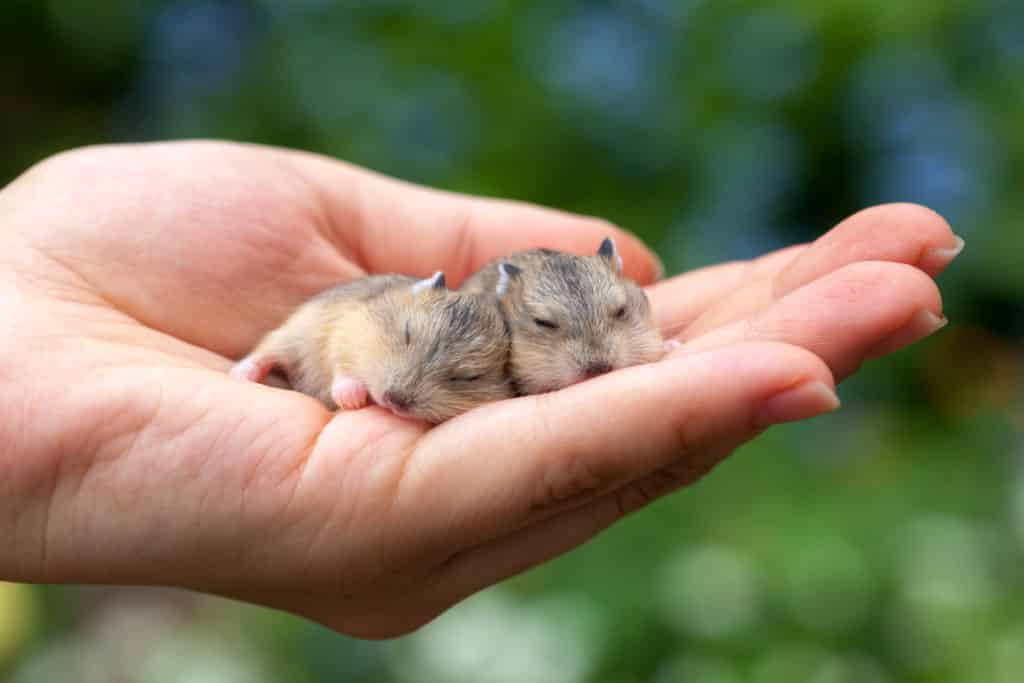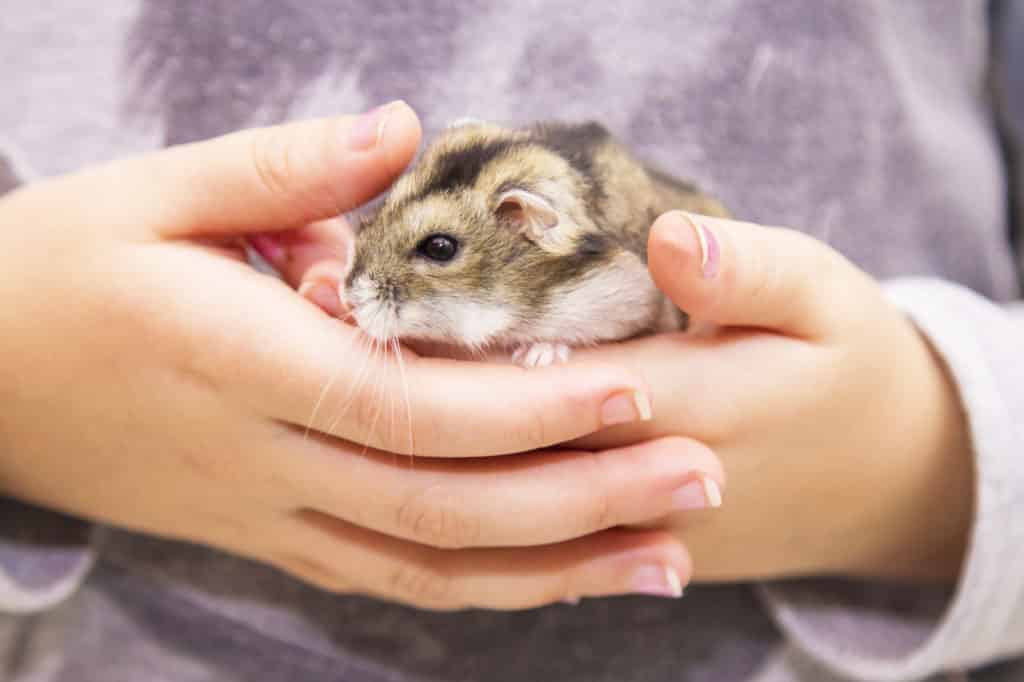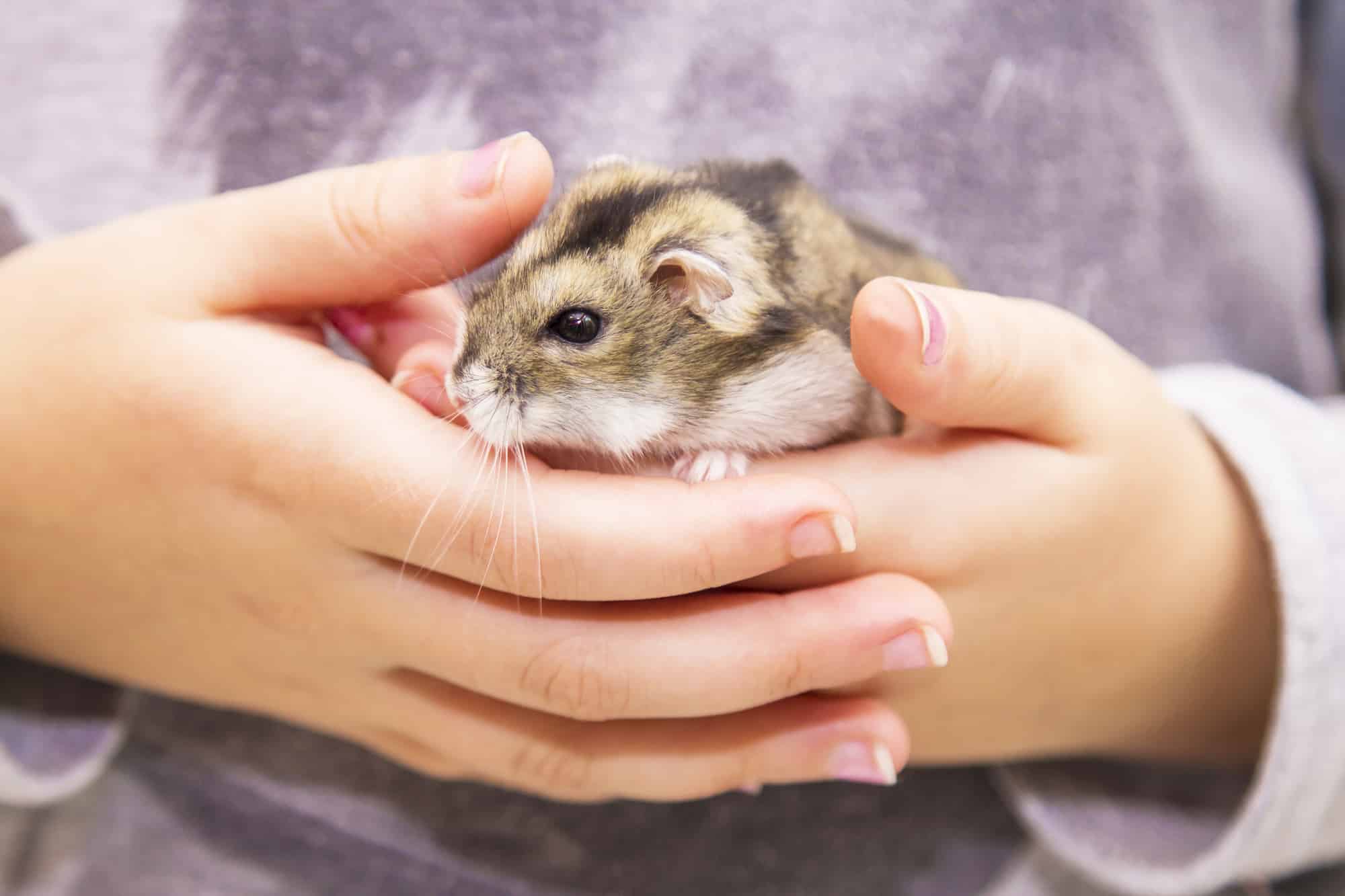Being pregnant is when all creatures, including human beings, need special care. Your pet hamster is no different. She, too, requires special care when she gets pregnant.
But if you are a new hamster owner and don’t know how to take care of a pregnant hamster, you don’t have to worry. This blog post will help you find out if your hamster is pregnant and how to take care of her properly.
How to tell if a hamster is pregnant?
To care for a pregnant hamster, you must first find out if your female hamster is pregnant. If the answer to all the questions below is yes, your hamster is pregnant.
- Is your hamster sexually mature? Different types of hamsters attain sexual maturity at various stages of their life. Syrian hamsters reach sexual maturity when they are 3 – 6 weeks old. Campbell hamsters attain sexual maturity when they are 4 – 5 weeks of age. Winter White hamsters, Chinese hamsters, and Roborovski hamsters reach sexual maturity when they are 4 – 8 weeks old. So, the first thing to do is to know if your hamster is old enough to get pregnant, i.e., if she is sexually mature.
- Has she been in the company of a male recently? The gestation period of different species differs slightly. Syrian hamsters give birth in 15 – 18 days after mating; Campbell and Winter White hamsters give birth in 18 – 22 days; Chinese hamsters in 20 – 21 days; Roborovski hamsters in 20 – 22 days (Source: Hamster central). So, once you have figured out if your hamster could be sexually mature, the next step is to find out if she was in the company of a male 1 – 3 weeks ago. If she mated more than a month ago, it is extremely unlikely that she is pregnant (even though Campbells and Winter Whites can delay their pregnancy after being impregnated by a process called Postimplantation Diaphase).
- Is your hamster pregnant or just fat? A fat hamster and a pregnant hamster don’t look the same. There is a slight difference in their appearance. A fat hamster will generally put on weight throughout her body. But a pregnant hamster will put on weight only around her belly. If we have to use an analogy, a plump hamster looks like an apple, whereas a pregnant hamster looks like a pear. Does your hamster look like a pear?
- Is your hamster preparing for pregnancy? If your hamster is pregnant, she might start building a nest and store more food than usual. When it is almost time to give birth, she might have vaginal bleeding, and her nipples might become visible. She could also become restless, aggressive, and more active. Does your hamster display these behaviors?
If the answer to all the above questions is ‘Yes,’ your hamster is most likely pregnant.
So, you have found out that your hamster is pregnant. What is the next step?
The next step is to care for the pregnant hamster.
How to Care for a pregnant hamster?
Hamsters are not yoga teachers. They cannot handle stress very well. When a mother hamster gets stressed or feels threatened, she might eat her babies. This is especially true if the hamster has never given birth before. So, while caring for a pregnant hamster, your main objective should be to make her feel safe and comfortable. The following steps can help her feel safe and comfortable and prepare for childbirth.
There are three phases in caring for a pregnant hamster – Before birth, Shortly after birth, and A few days after birth. Continue reading to find out which steps you should take during each phase.
Before birth
1. Make the cage safe for the pups
Make the cage safe so that newborn pups don’t end up getting hurt. Remove any sharp or pointed substances from the cage. Remove toys or objects on which pups can climb, fall down, and hurt themselves. Sand baths should be removed as well because newborn pups may inhale the sand and suffocate themselves. Remove tubes because they may get into the tubes, and their mother may not be able to find them. Remove the hamster wheel, which might distract the mother from taking care of her pups.
2. Clean the cage
If you just noticed that your hamster is pregnant, clean the cage thoroughly.
Stop cleaning the cage just a few days before childbirth. Don’t clean the cage again (for at least two weeks) until the pups are at least a week old.
3. Provide nesting material
Since you won’t be cleaning the cage for the next couple of weeks, it is essential to keep enough bedding – Ideally at least 8cm deep. Your hamster will use these materials to make a soft nest. So, the bedding should be soft enough for the newborn pups to lie on. Tissues and toilet paper are ideal for this purpose. Any other materials can be too hard for the newborn pups or might prick them.
4. Keep enough food
Once you find out your hamster is pregnant, start providing her a high-quality high-protein diet. Cooked chicken, hard-boiled egg whites, wheat germ, and cheese can help her become strong enough to give birth as well as replenish the nutrients she loses during childbirth. Clean water is essential as well (Source: The Spruce Pets).
A pregnant hamster needs a lot of calcium too. So, add food items rich in calcium twice a week to her diet. Find out if your hamster is lactose intolerant before giving her milk, cheese, and other dairy products.
5. Create a safe environment for your hamster
A pregnant hamster can quickly get stressed out. And stress is not good for a pregnant hamster.
Sudden noise can scare her easily. So, keep the room where you have placed your hamster calm.
If you have other pets, move them to another room. The smell and sounds of other pets, like cats and dogs, which are her predators, can stress her out a lot.
Do not touch or try to hold your hamster when she is pregnant. When a hamster is pregnant, she will be defensive and try to bite you. This is her natural reflex.
Shortly After birth
1. Leave the mother and her pups alone
Give your hamster enough privacy once she nears childbirth. Leave the mother and her pups alone. Do not try to touch her or hold her pups. If you touch her pups, your scent may stick to the pups. Then, she might consider her own pups a threat (because of the foreign smell) and kill them off. So, never tough the newborn pups.
If your hamster is living with another hamster, keep them in separate cages. This will keep the mother and her pups safe.
Do not change anything in the cage. You can spot clean spots where the mother urinates, but only if it is indispensable. But do not remove too much bedding as it might remove the smell of the cage, and then the mother hamster would be confused because her surroundings would smell totally new to her. This might stress her out as well.

2. Continue giving healthy food
Continue giving healthy food rich in proteins and calcium to the mother for several weeks after birth. She needs this food to rinse herself back to health and feed her pups.
3. Ensure the safety of the pups
Once you have performed the above steps, the next step is to ensure the safety of the pups. The pups are smaller than adult hamsters. So, they can easily fit through the bars in the cage. Hence, stray pups may escape from the cage, fall down, and hurt themselves. Therefore, cover the bars of the cage (if you have a bar cage) with something like cloth or cardboard to ensure that the pups cannot get out. But make sure that there is enough space for fresh air to get into the cage.
It is okay to check in on your hamsters once in a while. But don’t stay in front of the cage and look at your hamsters for a long time. The mother hamster will know you are there. This might stress her out, making her harm her pups. Sudden noise might scare your hamster. So, approach the cage slowly and silently.
The pups don’t have fur when they are born. So, increase the temperature of the room slightly. If not, they might feel cold.
4. Steps to take if your hamster becomes aggressive to her pups
If a pup is too weak to survive, the mother hamster might eat it. This gives the hamster enough nutrition to take care of the other healthy pups in the wild. This might happen to your hamster as well, and you may not be able to do anything about it. However, if you find that your hamster is aggressive to all her pups or has abandoned them, you must separate the mother and the pups and take them to a vet.
A few days after birth
1. Couple of days after birth
Ensure that you have enough water for the mother hamster and the pups. Lower the water bottles so that the pups can reach the sipper tubes
2. One week after birth
Around 7 -10 days after birth, you can start providing solid foods for the pups (Source: Squeaks and Nibbles). This is when the weaning process begins. As with any other mammal, during this time, the baby hamsters will start eating solid foods, but at the same time, they will continue drinking their mother’s milk as well. So, this is the time when you can start introducing hamster food to them. To make it easy for baby hamsters to eat and digest the hamster pellets you give them, you can first soak the pellets in water and then give these pellets to them.
But the food you give them need not be limited to commercial hamster pellets alone. You can give them fresh foods like fruits and vegetables as well. But baby hamsters cannot eat everything that an adult hamster can. So, consult a vet before creating a diet plan for your baby hamsters.
3. Three weeks after birth
Ideally, you can start taming the baby hamsters when they are 3 – 4 weeks old.

4. Four weeks after birth
This is the time when male hamsters attain sexual maturity. However, you should remember that the time when male hamsters reach sexual maturity is not the same all the time and differs depending on which species of hamster you have. But the time when they attain sexual maturity is when you should separate the males from the hamster family. If not, inbreeding could occur.
5. Six weeks after birth
This is when the hamsters in many hamster species attain full growth. By this time, they are capable of living independently. Moreover, this is the time when they can become territorial as well. So, by now, you should separate the hamsters from each other. If not, they might get aggressive and start fighting against each other (which may not be true for all hamster species).



